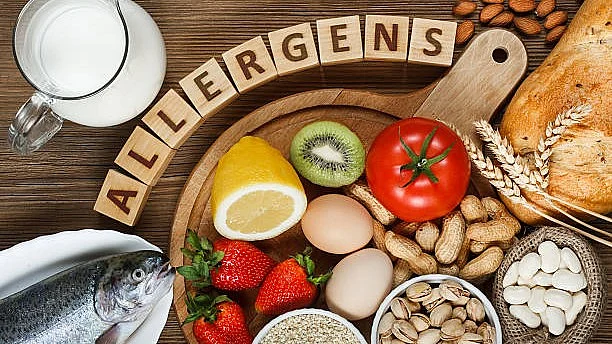There is today a lot of confusion about what foods to eat, and what to dump, thanks to the humongous amount misinformation floating around.
Food allergies and food intolerances are heavy words but are being thrown about as an excuse to stop eating foods arbitrarily and for putting a blanket ban on eating certain foods arbitrarily.
That is a wrong route to take.
Giving up a food completely should only be done if it is imperative (like in the case of an allergy) but things begin to go wrong when dumping certain foods (for example arbitrarily going gluten free) takes the shape of a faddist dieting ideology, and is done for erroneous reasons.
Unfortunately, somehow it has lately become hip to do exactly this.
And this makes eating complicated and right nutrition very difficult to score. Education is the way forward and it is important for everyone to understand the difference between a medical issue and a fad.
First the difference between a food allergy, sensitivity and food intolerance needs to be understood.
All three are food reactions and their symptoms can overlap, but the treatment and diagnosis are different. It is important to understand the difference between them as food allergies can be lethal.
Food Allergy
This is serious. Here the immune system sees a food as an invader leading to an allergic reaction that can trigger symptoms ranging from mild to severe, and these can even be life-threatening.
In these cases even minute amount of the offending food needs to be completely avoided.
Eight food categories cause 90 percent of the allergic reactions to foods: peanuts, tree nuts (almonds, Brazil nuts, cashews, hazelnuts, pecans, pistachios, and walnuts), fish, shellfish (shrimp, crayfish, crab, lobster, clams, scallops, oysters, and mussels), eggs, cow’s milk, soy, wheat.
Symptoms
Significant rashes, feeling of passing out, facial swelling, and breathing problems are often seen.
Sometimes the first time the food may elicit no reaction or a mild one and the second time it is eaten, the body releases more lgE and histamine along with other substances, which can impact various organs of the body including the lungs and heart.
For example if the histamine is released in the throat, it can lead to breathing difficulties, if it's released in the skin, one can develop hives.
Classic example is the potentially life-threatening difficulty breathing and low blood pressure following exposure to peanuts or seafood.
What Can Lead To It
Exposure to different allergens that trigger the immune system, a viral or bacterial infection or hormonal upheaval can be a catalyst. Usually they begin in the childhood but it is not uncommon to develop food allergies at any age and stage in life.
They can be genetic in nature too, and are passed on in families.
How to Diagnose
Food allergies often get diagnosed via blood tests and/or skin prick tests. A blood test can measure the immune system's response to particular foods by measuring the allergy-related antibody known as immunoglobulin E (IgE).
How To Manage
This needs to be diagnosed and treated timely. Visit a doctor for understanding proper treatment. Scrupulously reading ingredient labels and giving clear instructions when ordering at a restaurant helps.
Note: There is category called food sensitivity too, where while the immune system is involved, the body produces igG antibodies, which can lead to more subtle, less dangerous and longer lasting effects. The symptoms and offending foods are often are similar to food intolerances.
Food Intolerance
In case of a food intolerance, the reaction is triggered by the digestive system. It simply means that the gut is sensitive to certain foods, can't properly digest it, and might irritate the digestive system.
If you have a food intolerance, you may be able to eat small amounts of the offending food without trouble.
Common Offending Foods
A common intolerance is lactose intolerance.
Often with age, our intestines make less of the enzyme (lactase) that processes lactose (found in dairy), so may lead to stomach bloating, inflammation, and diarrhea. Gluten too is a well known trigger.
Food colourings, preservatives, caffeine, eggs, sulfites (found in wine, apple cider, canned veggies, and baked foods) are other common culprits.
Symptoms
Common food allergy signs and symptoms include tingling or itching in the mouth, swelling of the lips, face, tongue, wheezing, nasal congestion or trouble breathing.
Often the guts gets affected leading to abdominal pain, diarrhea, nausea or vomiting, accompanied by dizziness and lightheadedness.
What Can Lead To It
Weakening of the gut, lack of certain enzymes in the gut, leaky gut, inflammation in the body are typical reasons.
How to Diagnose
Pinpointing food sensitivities or intolerances can take some time and is usually done via trial and error by maintaining a food diary. Yes, the best tool to identify food sensitivities is a process of careful observation and experimentation and following an elimination diet.
Removing certain foods believed to cause reactions from the diet for two to four weeks, reintroducing them one by one is the common route to follow to pint he offending food.
How to Manage
Often to manage it one may need to eat less of that food or eat it less frequently, depending on how the body reacts to it.
A nutritionist or a physician can help you develop the most comprehensive diet that is safe for you.
Finally, finding ways to support the gut and restoring gut function is essential for addressing these intolerances.
(Kavita Devgan is a nutritionist, weight management consultant, and health writer based in Delhi. She is the author of Don’t Diet! 50 Habits of Thin People (Jaico), Ultimate Grandmother Hacks: 50 Kickass Traditional Habits for a Fitter You (Rupa) and Fix it with foods.)

